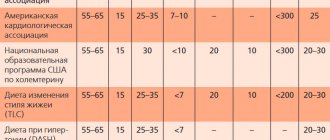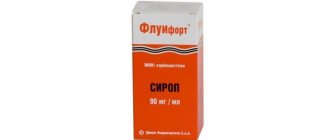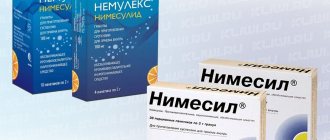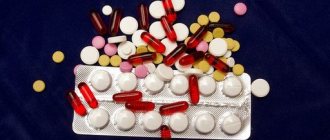Home | About us | Delivery | Advertisers | Login | Registration
The pharmacy is closed on Sundays and holidays.
- Medicines
- dietary supplementsVitamins
- Categories from A to Z
- Brands from A to Z
- Products from A to Z
- Medical equipment
- beauty
- Child
- Care
- Honey products appointments
- Herbs and herbal teas
- Medical nutrition
- Journey
- Making medicinesStock
Pharmacy online is the best pharmacy in Almaty, delivering medicines to Almaty. An online pharmacy or online pharmacy provides the following types of services: delivery of medicines, medicines to your home. Online pharmacy Almaty or online pharmacy Almaty delivers medicines to your home, as well as home delivery of medicines in Almaty.
my basket
Apteka84.kz is an online pharmacy that offers its customers medicines, medicinal and decorative cosmetics, dietary supplements, vitamins, baby food, intimate products for adults, medical equipment and thousands of other medical and cosmetic products at low prices. All data presented on the Apteka84.kz website is for informational purposes only and is not a substitute for professional medical care. Apteka84.kz strongly recommends that you carefully read the instructions for use contained in each package of medicines and other products. If you currently have any symptoms of the disease, you should seek help from a doctor. You should always tell your doctor or pharmacist about all the medicines you take. If you feel you need further help, please consult your local pharmacist or contact our GP online or by telephone.
© 2021 Pharmacy 84.
Instructions for use MACROPEN® (MACROPEN)
Midecamycin is a broad-spectrum antibiotic of the macrolide group, similar in activity to erythromycin.
Midecamycin is active against gram-positive bacteria -
Staphylococcus spp., Streptococcus spp., Pneumococcus spp., Bacillus anthracis, Corynebacterium diphtheriae, Listeria monocytogenes;
against some gram-negative bacteria
- Bordetella pertussis, Campylobacter spp., Moraxella catarrhalis, Neisseria spp.;
anaerobes
- Clostridium spp.
and Bacteroides spp.; intracellular pathogens
- Mycoplasma spp., Chlamydia spp., Legionella spp., Ureaplasma urealyticum.
In vitro bacterial susceptibility to midecamycin acetate (MDM-acetate) and midecamycin (MDM)
| Average MIC90 (µg/ml) | ||
| Bacterium | MDM acetate | MDM |
| Streptococcus pneumoniae | 0.5 | 0.10 |
| Streptococcus pyogenes | 0.67 | 0.20 |
| Streptococcus viridans | 0.28 | 0.39 |
| Staphylococcus aureus | 1.5 | 1.5 |
| Listeria monocytogenes | 2 | 1.5 |
| Bordetella pertussis | 0.25 | 0.20 |
| Legionella pneumophila | 0.1 | 0.12-1 |
| Moraxella catarrhalis | 2 | — |
| Helicobacter pylori | 0.5 | — |
| Propionibacterium acnes | 0.12 | — |
| Bacteroides fragilis | 5.5 | 3.13 |
| Mycoplasma pneumoniae | 0.024 | 0.0078 |
| Ureaplasma urealyticum | 0.34 | 1.56 |
| Mycoplasma hominis | 2.3 | — |
| Gardnerella vaginalis | 0.08 | — |
| Chlamydia trachomatis | 0.06 | — |
| Chlamydia pneumoniae | 0.5 | — |
The criteria for midecamycin regarding MIC interpretation are the same as for other macrolides according to NCCLS (National Clinical Laboratory Standards) standards. Bacteria are defined as sensitive if their MIC90 is ≤ 2 μg/ml, and as resistant if their MIC90 is ≥ 8 μg/ml.
Antibacterial effectiveness of metabolites
Metabolites of midecamycin have a similar antibacterial spectrum as midecamycin, but their effect is somewhat weaker. The results of some animal studies have demonstrated that the effectiveness of midecamycin and midecamycin acetate is better in vivo than in vitro. This is partly due to high concentrations of active metabolites in tissues.
Mechanism of action
Midecamycin inhibits RNA-dependent protein synthesis at the stage of protein chain elongation. Reversibly binds to the 50S subgroup and blocks the transpeptidation and/or translocation reaction. Due to the different structure of ribosomes, binding to the ribosomes of a eukaryotic cell does not occur. Therefore, the toxicity of macrolides to human cells is low.
Midecamycin, like other macrolide antibiotics, has a mainly bacteriostatic effect. It is also capable of exerting a bactericidal effect, which depends on the type of bacterium, the concentration of the active substance at the site of action, the size of the inoculum and the reproductive stage of the microorganism. In vitro activity is reduced in acidic conditions. If the pH value in the cultivation medium of Staphylococcus aureus or Streptococcus pyogenes increases from 7.2 to 8.0, then the MIC for midecamycin is 2 times lower; if the pH decreases, the MIC increases.
High intracellular concentrations of macrolides are achieved as a result of their good lipid solubility. This is especially important when treating infections caused by microorganisms with an intracellular development cycle, such as chlamydia, legionella and listeria. Midecamycin has been shown to accumulate in human alveolar macrophages. Macrolides also accumulate in neutrophils. While the ratio between extracellular and intracellular concentrations for erythromycin ranges from 1 to 10, for newer macrolides, including midecamycin, this value is greater than 10. The accumulation of neutrophils at the site of infection may further increase the concentration of macrolides in infected tissues.
In vitro studies have shown that midecamycin also affects immune functions. Thus, increased chemotaxis has been established in comparison with erythromycin. Midecamycin appears to stimulate natural killer cell activity in vivo. All of these studies indicate that midecamycin affects the immune system, which may be important for the in vivo antibiotic action of midecamycin.
Sustainability
Resistance to macrolides develops for the following reasons:
- decreased permeability of the outer cell membrane (Enterobacteria), inactivation of the drug (Staphylococcus aureus, Escherichia coli) and, most importantly, a change in the site of action.
From a geographic perspective, the prevalence of bacterial resistance to macrolides is highly variable. Resistance of methicillin-susceptible Staphylococcus aureus strains ranges from 1% to 50%, while most methicillin-resistant Staphylococcus aureus strains are also resistant to macrolides. Resistance of pneumococci is generally below 5%, but in some parts of the world it exceeds 50% (Japan). Resistance of Streptococcus pyogenes to macrolides ranges from 1% to 40% in Europe. Resistance very rarely develops in Mycoplasma spp., Chlamydia spp., Legionella spp. and Corynebacterium diphtheriae.
Macropen granules for suspension 175 mg/5 ml
Indications Infectious and inflammatory diseases caused by microorganisms sensitive to the drug:
— infections of the respiratory tract, urinary system, genital organs caused by Mycoplasma spp., Chlamydia spp., Legionella spp. and Ureaplasma urealyticum;
- infections of the respiratory tract, skin and subcutaneous tissue caused by microorganisms sensitive to penicillin;
- treatment of infections in patients with hypersensitivity to penicillin antibiotics;
- treatment of enteritis caused by Campylobacter spp.;
- treatment and prevention of diphtheria and whooping cough.
pharmachologic effect
Antibiotic of the macrolide group. Inhibits protein synthesis in bacterial cells. Reversibly binds to the 50S subunit of the bacterial ribosomal membrane. In low doses the drug has a bacteriostatic effect, in high doses it has a bactericidal effect.
Active against intracellular microorganisms:
Mycoplasma spp., Chlamydia spp., Legionella spp., Ureaplasma urealyticum;
gram-positive bacteria:
Streptococcus spp., Staphylococcus spp., Corynebacterium diphtheriae, Listeria monocytogenes, Erysipelothrix spp., Clostridium spp.;
gram-negative bacteria:
Neisseria spp., Moraxella catarrhalis, Bordetella pertussis, Helicobacter spp., Campylobacter spp., Bacteroides spp.
Pharmacokinetics
Absorption
After oral administration, midecamycin is quickly and fairly completely absorbed from the gastrointestinal tract.
Cmax in the serum of midecamycin and myocamycin (midecamycin acetate) are 2.5 mg/l and 1.31-3.3 mg/l, respectively, and are achieved 1-2 hours after oral administration.
Distribution
High concentrations of midecamycin and myocamycin are created in internal organs (especially in lung tissue, parotid and submandibular glands) and skin. MIC is maintained for 6 hours.
Metabolism
Midecamycin is metabolized in the liver to form 2 metabolites with antimicrobial activity.
Removal
T1/2 is approximately 1 hour. Midecamycin is excreted in bile and to a lesser extent (about 5%) in urine.
Instructions for use / dosage
The drug should be taken before meals.
For adults and children weighing more than 30 kg,
Macropen is prescribed 400 mg (1 tablet) 3 times a day.
The maximum daily dose for adults is 1.6 g. For children weighing less than 30 kg
The daily dose is 20-40 mg/kg body weight in 3 divided doses or 50 mg/kg body weight in 2 divided doses, for
severe infections
- 50 mg/kg body weight in 3 divided doses.
The prescription regimen for Macropen in the form of a suspension for children (daily dose 50 mg/kg body weight) is presented in the table.
| Body weight (approximately age) | Suspension (175 mg/5 ml) |
| up to 5 kg (approx. 2 months) | 3.75 ml (131.25 mg) 2 times/day. |
| up to 10 kg (approx. 1-2 years) | 7.5 ml (262.5 mg) 2 times/day. |
| up to 15 kg (approx. 4 years) | 10 ml (350 mg) 2 times/day. |
| up to 20 kg (approx. 6 years) | 15 ml (525 mg) 2 times/day. |
| up to 30 kg (approx. 10 years) | 22.5 ml (787.5 mg) 2 times/day. |
The duration of treatment is from 7 to 14 days, when treating chlamydial infections
- 14 days.
To prepare the suspension, add 100 ml of boiled or distilled water to the contents of the bottle and shake well. It is recommended to shake the prepared suspension before use.
Side effect
From the digestive system:
possible loss of appetite, stomatitis, nausea, vomiting, diarrhea, increased activity of liver transaminases and jaundice; rarely - a feeling of heaviness in the epigastrium; in some cases, severe and prolonged diarrhea, which may indicate the development of pseudomembranous colitis.
Allergic reactions:
possible skin rash, urticaria, itching, eosinophilia.
Contraindications
: severe liver failure;
- hypersensitivity to midecamycin/myocamycin and other components of the drug.
Use during pregnancy and breastfeeding
The use of Macropen during pregnancy is possible only if the expected benefit to the mother outweighs the potential risk to the fetus.
Midecamycin is excreted in breast milk. When using Macropen during lactation, breastfeeding should be stopped.
Use for liver dysfunction
The drug is contraindicated for use in severe liver failure.
During long-term therapy, liver enzyme activity should be monitored, especially in patients with impaired liver function.
special instructions
As with the use of any other antimicrobial drugs, overgrowth of resistant bacteria is possible Macropen Prolonged diarrhea may indicate the development of pseudomembranous colitis.
During long-term therapy, liver enzyme activity should be monitored, especially in patients with impaired liver function.
Impact on the ability to drive vehicles and operate machinery
The effect of Macropen on the speed of psychomotor reactions and the ability to drive a car and other mechanisms has not been reported.
Overdose
reports of cases of serious intoxication caused by the drug Macropen .
Symptoms:
Nausea and vomiting are possible.
Treatment:
carrying out symptomatic therapy.
Drug interactions
With the simultaneous use of Macropen with ergot alkaloids and carbamazepine, their metabolism in the liver decreases and their concentration in the serum increases. The simultaneous administration of these drugs with Macropen is not recommended.
When Macropen with cyclosporine and warfarin, the elimination of the latter is slowed down.
Conditions for dispensing from pharmacies
The drug is available with a prescription.
Storage conditions and periods
Tablets should be stored in a place protected from moisture, out of the reach of children, at a temperature not exceeding 25°C. Granules for preparing the suspension should be stored at a temperature not exceeding 25°C. Shelf life: 3 years.
The prepared suspension can be used within 14 days if stored in the refrigerator.
Macropen 175mg/5ml 115ml Suspension
Trade name: Macropen® International nonproprietary name: Midecamycin Dosage form: Granules for the preparation of an oral suspension 175 mg/5 ml Composition: One gram of granulate contains the active substance - midecamycin acetate 200.00 mg, excipients: methyl parahydroxybenzoate, propyl parahydroxybenzoate, citric acid , anhydrous sodium hydrogen phosphate, banana flavor (powder), yellow iron oxide (E 172), hypromellose, silicone defoamer, sodium saccharin, mannitol. Description: Small yellow granules with a slight banana smell without visible impurities. After adding 100 ml of water and vigorous shaking, a yellow suspension with a slight banana smell should form. Pharmacotherapeutic group: Antimicrobial drugs for systemic use. Macrolides.
Pharmacological properties:
Pharmacokinetics Absorption. Midecamycin is rapidly and relatively well absorbed, reaching maximum serum concentrations of 0.5 mcg/ml to 2.5 mcg/ml within 1 to 2 hours. Eating slightly reduces maximum concentrations, especially in children (4 to 16 years). Therefore, it is recommended to take midecamycin before meals. Distribution. Midecamycin penetrates well into tissues, where it reaches more than 100% concentration than in the blood. High concentrations were found in bronchial secretions and in the skin. The volume of distribution of midecamycin acetate is large: 228 - 329 liters. 47% of midecamycin and 3 - 29% of metabolites are protein bound. Midecamycin acetate is excreted into breast milk. After a dose of 1200 mg/day, 0.4 mcg/ml - 1.7 mcg/ml midecamycin acetate is detected in breast milk. Metabolism and removal. Midecamycin is primarily metabolized into active metabolites in the liver. It is excreted primarily in bile, and only about 5% in urine. Significant increases in maximum serum concentrations, area under the curve, and half-life may be observed in patients with cirrhosis.
Pharmacodynamics Macropen® is a broad-spectrum macrolide antibiotic whose activity is similar to that of erythromycin. Macropen® is active against gram-positive bacteria (staphylococci, streptococci, pneumococci, Bacillus anthracis, Corynebacterium diphtheriae, and Listeria monocytogenes), against some gram-negative bacteria (Bordetella pertussis, Campylobacter, Moraxella catarrhalis and Neisseria spp.), anaerobes (Clostridium spp. . and Bacteroides spp.) and other bacteria such as mycoplasma, ureaplasma, chlamydia and legionella. The criteria for Macropen® regarding the interpretation of MIC (minimum inhibitory concentration) are the same as for other macrolides according to NCCLS (National Committee on Clinical Laboratory Standards) standards. Bacteria are defined as sensitive if their MIC90 is ? 2 µg/ml, how resistant if their MIC90? 8 µg/ml. Metabolites have a similar antibacterial spectrum, but their effect is somewhat weaker. Mechanism of action. Macropen® inhibits RNA-dependent protein synthesis at the stage of protein chain elongation. Midecamycin reversibly binds to the 50S subgroup and blocks the transpeptidation and/or translocation reaction. Due to the different structure of ribosomes, communication with the ribosomes of a eukaryotic cell does not occur. This is why the toxicity of macrolides to human cells is low. Like other macrolide antibiotics, Macropen® has a mainly bacteriostatic effect. However, it may also have a bactericidal effect, which depends on the type of bacterium, the drug concentration at the site of action, the size of the inoculum and the reproductive stage of the microorganism. In vitro activity is reduced in acidic conditions. If the pH value in the culture medium of Staphylococcus aureus or Streptococcus pyogenes increases from 7.2 to 8.0, the MIC for midecamycin is two times lower. If the pH drops, the situation is reversed. High intracellular concentrations of macrolides are achieved as a result of their good lipid solubility. This is especially important when treating infections caused by microorganisms with an intracellular development cycle, such as chlamydia, legionella and listeria. Midecamycin has been shown to accumulate in human alveolar macrophages. Midecamycin also accumulates in neutrophils. The intracellular concentration of midecamycin exceeds its extracellular concentration by more than 10 times. The accumulation of neutrophils at the site of infection may further increase the concentration of midecamycin in infected tissues. Macropen® also affects immune functions. Indications for use: - infections of the respiratory tract and genitourinary tract caused by mycoplasmas, legionella, chlamydia and Ureaplasma urealyticum - infections of the respiratory tract, skin and subcutaneous tissue and all other infections caused by bacteria sensitive to midecamycin and penicillin, in patients with hypersensitivity to penicillin - enteritis caused by bacteria of the genus Campylobacter - treatment and prevention of diphtheria and whooping cough Method of administration and dosage: To prepare the suspension, open the bottle cap and add 100 ml of distilled water (freshly boiled and cooled water can be used), close the bottle cap and shake well until homogeneous suspension (about 2-3 min). The prepared suspension must be shaken before use. Measure out the required amount using the included measuring spoon. 1 scoop contains 175 mg of midecamycin. The suspension must be taken before meals. Below is the prescription schedule (daily dose 50 mg/kg body weight): Children Suspension 175 mg/5 ml up to 30 kg (~ 10 years) 2 x 22.5 ml (787.5 mg or 4.5 scoops) up to 20 kg ( ~ 6 years) 2 x 15 ml (525 mg or 3 scoops) up to 15 kg (~ 4 years) 2 x 10 ml (350 mg or 2 scoops) up to 10 kg (~ 1 - 2 years) 2 x 7, 5 ml (262.5 mg or 1.5 measuring spoons) up to 5 kg (~ 2 months) 2 x 3.75 ml (131.25 mg, measure to 3.75 ml mark on measuring spoon) ) The daily dose of Macropen® is 20 – 40 mg/kg body weight, divided into three doses or 50 mg/kg body weight in two doses, in case of severe infections, 50 mg/kg body weight in three doses. The duration of treatment is usually from 7 to 14 days. Chlamydial infections are treated for 14 days. Side effects: Uncommon: - nausea, loss of appetite, vomiting, diarrhea and stomatitis Very rare: - eosinophilia - pseudomembranous colitis - rash, urticaria, itching - increased transaminase activity and jaundice If serious side effects occur, you must stop taking the drug. Contraindications: - hypersensitivity to the active substance or auxiliary components of the drug; - severe liver failure Drug interactions: Macrolides are known to interact with other drugs. Macrolide antibiotics affect liver metabolism by inactivating cytochrome P450. Unlike erythromycin, Macropen® does not bind to microsomal oxidases of liver cells and does not produce stable complexes with cytochrome P450. As a result, it does not affect the pharmacokinetics of theophylline. Macropen® may increase serum levels of cyclosporine (two-fold) and prolong the half-life and AUC (area under the curve) of carbamazepine. Caution is recommended in children taking carbamazepine or cyclosporine concomitantly, and serum levels should be monitored whenever possible. Concomitant use of Macropen® and ergot alkaloids may cause decreased hepatic metabolism and increased serum concentrations of ergot alkaloids. Caution should be exercised when using warfarin concomitantly because Macropen® may slow its elimination, which increases the risk of hemorrhage. Special instructions: This dosage form is intended only for children weighing less than 30 kg. Adults and children weighing more than 30 kg should take the drug in tablet form. During long-term therapy, the activity of liver enzymes should be monitored, especially in children with impaired liver function. As with any antimicrobial drug, long-term treatment may result in overgrowth of resistant bacteria. Prolonged diarrhea may indicate the development of pseudomembranous colitis. Overdose: Symptoms: nausea and vomiting. Treatment is symptomatic. Release form and packaging: 20 g in dark glass bottles with a capacity of 150 ml with a screw-on aluminum cap and an internal polyethylene lining. 1 bottle, complete with a polypropylene dosing spoon, along with instructions for use in the state and Russian languages, is placed in a cardboard pack. Storage conditions: Store at a temperature not exceeding 25 0C. Store in original packaging. Keep out of the reach of children! Shelf life: 3 years. The finished suspension is stored for 14 days in the refrigerator or 7 days at a temperature not exceeding 25°C. Do not use after the expiration date. Conditions for dispensing from pharmacies: By prescription




